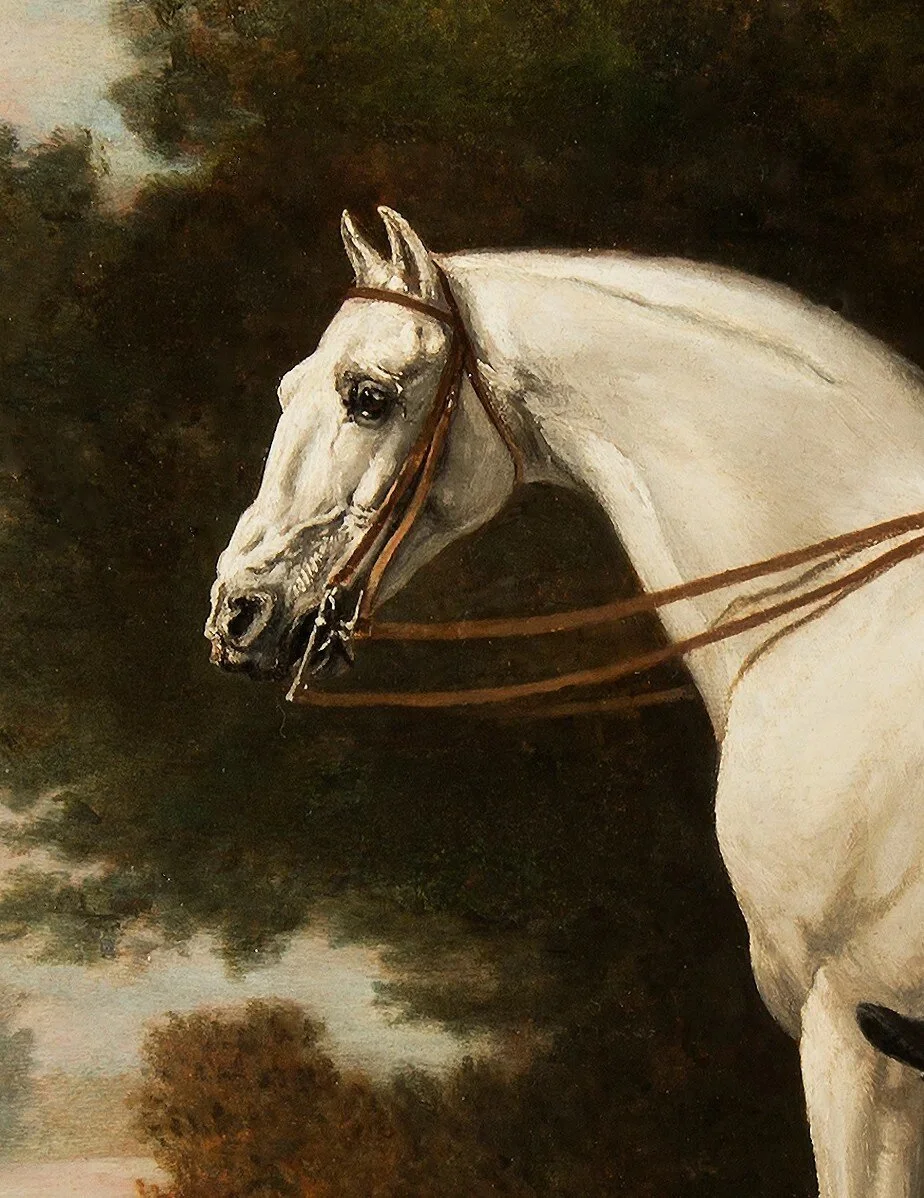Portrait of a Gentleman upon a Grey Hunter, 1781 by George Stubbs






Portrait of a Gentleman upon a Grey Hunter, 1781 by George Stubbs
In this striking portrait, the sitter’s pose is a variation of that used in Stubbs’ portrait of William Evelyn from 1770 and in Stubbs’ own self-portrait of 1782. When comparing this portrait with Stubbs’ from 1782 Basil Taylor wrote, ‘The man’s features show such a strong resemblance to the artist’s, while being considerably younger, that one is bound to consider the possibility that the picture may represent his natural son, George Townly Stubbs’. No certain portrait of GT Stubbs is known, so this suggested identification must remain speculative. There is certainly a lack of pretension about the sitter which might suggest if not his own family at least a friend of Stubbs
DIMENSIONS: (unframed) 24 x 28 in./ 61 x 71 cm
SIGNATURE: Inscribed ‘Geo.Stubbs pinxit/1781 lower right
MEDIUM: Oil on panel
Price: £POA.
George Stubbs made his name in the eighteenth century by masterfully understanding of the horse, as exemplified in this remarkable portrait. Stubbs could perhaps be considered the most important sporting artist of all time. He analysed the anatomy, muscle structure and movement of horses in order to create equestrian pictures unlike any other from his time. His extensive travels, including to Italy to study the work of Renaissance Masters contributed to his knowledge. He also had what he called his ‘equine pathological laboratory’, where dead horses were suspended from the ceiling for dissection, for further research.
The present Portrait of a Gentleman upon a Grey Hunter was shown in the Tate’s Stubbs exhibition of 1985. It would appear that this picture is a rare portrait of Stubbs’s natural son. The Tate’s catalogue sheds light on the possible identity of the gentleman in Portrait of a Gentleman upon a Grey Hunter, as follows:
“The sitter’s pose is a variation of that used in .. Stubbs’s own self portrait of 1782 [Basil] Taylor considers that ‘The man’s features show such a strong resemblance to the artist’s, while being considerably younger, that one is bound to consider the possibility that the picture may represent his natural son, George Townly Stubbs.’ Aside from the interest created in the apparent identity of the sitter, the composition and execution of the painting embodies all that Stubbs was most famous for: the exacting observation of a sporting horse’s repose.
The fact that Portrait of a Gentleman upon a Grey Hunter was once owned by Paul Mellon is significant. He bought his first British oil painting in 1936, a masterpiece called Pumpkin with a Stable Lad by Stubbs – an artist for whom he retained a lifelong devotion. Mellon is described by the Yale Center for British Art as ‘one of the greatest art collectors and philanthropists of the twentieth century’. The Tate exhibition of 1985 was so thoroughly supported by this life-long Stubbs collector that the entire exhibition was dedicated to him.
Exhibited
Exhibited R A 1964-65 (264)
Yale 1965 (176)